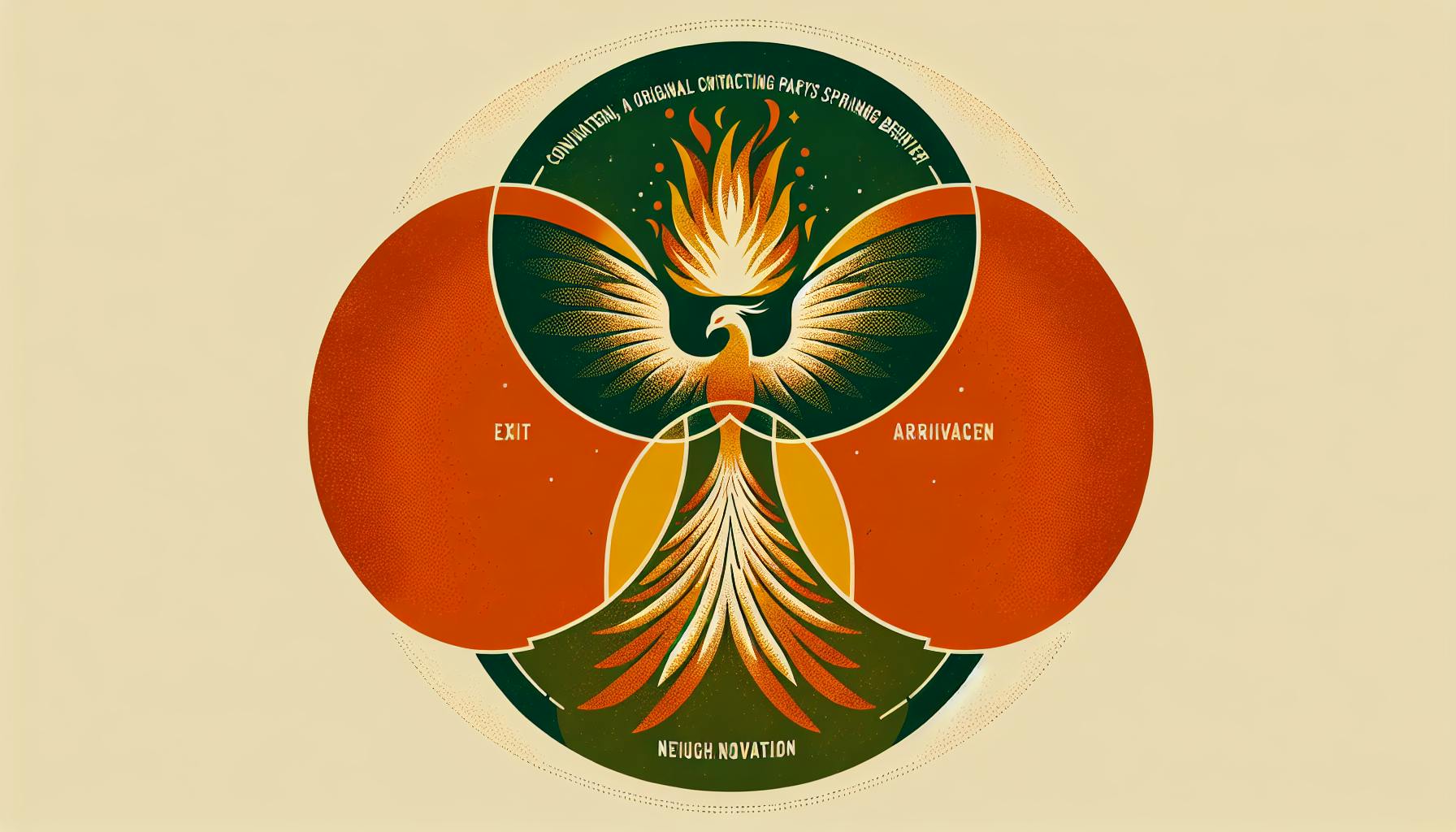Most legal professionals would agree that clerical errors in criminal case judgments can create complications.
Fortunately, Rule 36 of the Federal Rules of Criminal Procedure offers a process for efficiently correcting certain clerical mistakes in judgments, providing clarity and fairness.
In this article, we will define Rule 36, examine the scope of clerical errors it addresses, outline key procedural steps for utilizing the rule, and consider strategic factors for crafting effective Rule 36 motions.
Introduction to Rule 36 of Federal Criminal Procedure
Rule 36 of the Federal Rules of Criminal Procedure provides a mechanism to correct clerical errors in judgments. This rule serves an important purpose in promoting efficiency and avoiding unnecessary appeals over minor errors.
Defining Rule 36 and Its Purpose
Rule 36 states that "After giving any notice it considers appropriate, the court may at any time correct a clerical error in a judgment, order, or other part of the record, or correct an error in the record arising from oversight or omission." This allows the court to efficiently fix minor errors like typos or math miscalculations without needing to conduct more formal proceedings. The purpose is to clarify the court's original intent and ensure the accuracy of court records.
Scope of Clerical Errors Addressed by Rule 36
Rule 36 applies to clerical errors only - it does not allow judges to substantively modify judgments. Examples of clerical errors that could be corrected under Rule 36 include:
- Typographical errors in names, dates, statutory citations, or mathematical calculations
- Unintended omissions of information like restitution amounts or supervision conditions
- Transcription errors in converting an oral ruling to the written judgment
As long as the intention of the court is clear and the error is minor in nature, Rule 36 gives judges flexibility to correct oversights efficiently.
Advantages of Understanding Rule 36 in Federal Criminal Procedure
Because Rule 36 offers a simplified way to remedy clerical errors, becoming familiar with its scope can be useful for federal practitioners. It avoids the need to appeal convictions or re-sentence defendants due to minor mistakes. Rule 36 also prevents unfair outcomes for defendants from unintentional errors impacting their rights or obligations. Overall, Rule 36 promotes procedural fairness and efficiency in the federal criminal justice system.
What is the Federal Rule of Criminal Procedure Rule 36?
Federal Rule of Criminal Procedure Rule 36 allows courts to correct clerical errors or oversights in judgments, orders, or other parts of the court record at any time. This rule states:
Clerical Mistakes. Clerical mistakes in judgments, orders or other parts of the record and errors in the record arising from oversight or omission may be corrected by the court at any time and after such notice, if any, as the court orders.
The purpose of Rule 36 is to give courts the authority to fix minor clerical errors, oversights, or omissions in the court record, including in judgments and orders. This allows the court to ensure the record accurately reflects the court's intentions, even after the judgment or order has been entered.
Some examples of clerical errors that could be corrected under Rule 36 include:
- Typographical errors in a defendant's name or the statute they were convicted under
- Errors in sentencing calculations, such as an incorrect calculation of jail time credits
- Checking the wrong box on a form judgment or order
- Omitting a component of the sentence, such as restitution or community service
Rule 36 is not intended to allow substantive changes or amendments to judgments or orders. It is solely for fixing clerical-type errors to ensure the record matches what was intended. Any substantive changes to a judgment would need to follow normal post-judgment motion procedures.
So in summary, Federal Rule of Criminal Procedure 36 gives federal courts a simple procedural mechanism to efficiently correct minor clerical oversights in judgments, orders, or other court records after they have been entered. This allows the court to maintain accurate records reflecting what was intended.
What is the Federal Rule of Evidence 36?
Rule 36 of the Federal Rules of Criminal Procedure allows courts to correct clerical errors in judgments at any time. This rule serves the vital purpose of ensuring accuracy in court records and judgments.
Specifically, Rule 36 states that "After giving any notice it considers appropriate, the court may at any time correct a clerical error in a judgment, order, or other part of the record, or correct an error in the record arising from oversight or omission." A clerical error refers to a minor mistake or unintentional inaccuracy, such as a typographical error. Common examples include spelling a name incorrectly or entering an incorrect date.
Rule 36 gives courts broad authority to fix these minor errors in the record. This helps avoid unnecessary appeals or confusion stemming from clear mistakes in a judgment or order. Courts can correct clerical errors on their own initiative or in response to a party's motion. The ability to efficiently remedy clerical errors ultimately serves the interests of justice by ensuring court records reflect accurate information.
In summary, Rule 36 of the Federal Rules of Criminal Procedure allows federal courts to correct insignificant clerical mistakes in judgments and court records at any time. This straightforward procedural mechanism reduces inefficiencies and promotes accuracy in the court system.
What is the rule 36 of the federal rules of civil procedure?
Rule 36 of the Federal Rules of Civil Procedure allows parties to request admissions of the truth of any matters relating to facts, the application of law to facts, or opinions about either facts or the application of law to facts. The purpose of Rule 36 is to narrow the issues for trial by identifying and eliminating matters on which the parties agree.
Some key points about Rule 36:
-
A party can serve a written request to another party asking them to admit the truth of any non-privileged matter that is relevant to the case. This includes requests to admit the truth of facts, the application of law to facts, or the genuineness of documents.
-
The responding party must admit or deny each request, or state detailed reasons why they cannot truthfully admit or deny it. Lack of knowledge or information is not a valid reason for failure to admit or deny unless the responding party has made reasonable inquiry.
-
Any matter admitted under Rule 36 is conclusively established unless the court permits withdrawal or amendment. This helps streamline the case by removing issues that are no longer in dispute.
-
If a party fails to respond or improperly denies a request, the requesting party can ask the court to determine the matter or impose sanctions. Sanctions can include requiring the non-responding party to pay expenses caused by the failure to admit.
In summary, Rule 36 is a discovery device used to define and limit disputed issues in preparation for trial. It encourages admissions to speed up litigation and decrease costs. Careful use of requests for admissions can help crystallize the core disputed issues that require trial.
What do you mean by clerical errors?
A clerical error refers to a minor mistake or oversight typically made by administrative staff or office workers when preparing legal paperwork or court documents. Examples include typos, incorrect dates, misspellings of names, omitting required information, filing paperwork in the wrong court, etc.
These errors are usually accidental and easy to correct. They do not impact the facts or legal merits of a case. Judges can order corrections to fix clerical errors in judgments so the court record accurately reflects the court's ruling and intent.
Clerical errors are different from judicial errors made by judges related to procedures, evidence rulings, jury instructions, or application of the law. Fixing substantive legal or judicial errors requires additional legal procedures like appeals.
sbb-itb-585a0bc
sbb-itb-585a0bc
sbb-itb-585a0bc
sbb-itb-585a0bc
Applicability of Rule 36 in Federal Criminal Judgments
Rule 36 of the Federal Rules of Criminal Procedure allows courts to correct clerical errors in judgments at any time. However, it does not permit changes to judicial or substantive errors. Understanding the scope of Rule 36 is key.
Identifying Clerical Errors Correctable Under Rule 36
Clerical errors involve minor mistakes in transcribing or recording judgments. Common examples include:
- Typographical errors in names, dates, statutory citations, etc.
- Mathematical miscalculations of fines or restitution amounts.
- Incorrect case numbers referenced in the judgment.
- Transcription errors in converting an oral ruling to the written judgment.
Such errors are correctable under Rule 36, as they do not involve the exercise of judicial discretion.
Distinguishing Judicial Errors Beyond the Reach of Rule 36
In contrast, judicial or substantive errors in judgments cannot be changed under Rule 36. These include:
- Sentencing decisions based on incorrect facts or case law interpretations.
- Rulings on motions that are later deemed erroneous.
- Imposing a sentence or sanctions the court later regrets.
As Rule 36 does not permit modifications to discretionary judicial acts, such errors can only be reviewed on appeal.
Navigating the Ambiguities of Rule 36
In some cases, it may be unclear whether an error is clerical or judicial. Examples include:
- Failure to memorialize part of the court's oral sentence in the written judgment.
- Conflicts between the court's oral pronouncement and the written judgment.
- Omission of mandatory provisions required by statute.
Courts must examine the facts and circumstances of each case to determine if Rule 36 applies. Its scope is interpreted narrowly to prevent substantive changes to judgments outside the appeals process.
Procedural Steps for Implementing Rule 36 Corrections
Eligibility to File a Motion for Correction Under Rule 36
The parties eligible to file a motion requesting a correction under Rule 36 include:
- The defendant
- The defense attorney
- The prosecution or government attorney
- In some cases, the court itself may initiate a Rule 36 motion
To have legal standing for a Rule 36 motion, the party filing must demonstrate they have been substantially affected by the clerical error in the judgment. For example, a defendant may file if there is an error in the sentence or fine amount stated in the judgment.
Executing the Correction of Clerical Errors
The procedural steps for correcting a clerical error under Rule 36 are:
-
Identify the Specific Clerical Error
The party filing the motion must clearly state the exact clerical error they wish to correct in the judgment. This includes specifying the incorrect text and the requested correction.
-
File a Rule 36 Motion
The motion must establish legal standing, demonstrate the error is truly clerical in nature, specify the requested correction, and explain how the error affects the party filing.
-
Allow Time for Response
The opposing party and court have reasonable time to respond to the motion and may file a reply supporting or opposing the requested correction.
-
Court Reviews and Issues Order
The court will review the motion and any replies, determine if a clerical error was made, and decide whether to grant or deny the requested correction. An order will be issued by the court.
-
Amended Judgment Entry
If granted, the court will issue an amended judgment with the clerical error corrected. This becomes the official judgment in the case.
Understanding Appeals and Timeliness in Rule 36 Motions
-
Rule 36 motions must be made within a "reasonable time" after the clerical error is discovered. Courts have discretion in determining timeliness.
-
Requests made years after the final judgment are less likely to be considered timely. Courts may deny untimely motions.
-
Parties can appeal a granted or denied Rule 36 motion ruling. The appeals process and deadlines are determined by the specific court's procedures.
Tactical Considerations for Rule 36 Motions in Federal Criminal Cases
Rule 36 of the Federal Rules of Criminal Procedure allows courts to correct clerical errors in judgments at any time. This section provides tips for making effective use of Rule 36 motions.
Optimal Timing for Filing Rule 36 Motions
-
File soon after discovering the error to prevent further issues. However, clerical errors can be corrected at any time.
-
Consider whether correcting the error impacts other processes like appeals. Get legal advice on optimal timing.
-
Act promptly if the error affects the defendant’s rights or liberty interests.
Crafting Effective Rule 36 Motions
-
Clearly state the precise error and correction requested. Provide factual background and attach relevant records.
-
Justify using supporting statutes, rules, case law and evidence. Demonstrate the error is truly clerical.
-
Request a hearing if needed to present arguments and evidence supporting the motion.
Countering Opposition to Rule 36 Motions
-
Emphasize the motion's narrow scope and that Rule 36 only applies to minor clerical errors.
-
Argue correcting errors now prevents future litigation over technicalities.
-
If denied, request reconsideration and provide additional evidence and arguments addressing concerns raised.
Real and Hypothetical Examples of Rule 36 Applications
Rule 36 of the Federal Rules of Criminal Procedure allows courts to correct clerical errors in judgments at any time. This section provides examples of how Rule 36 can be successfully applied.
Case Study: Successful Application of Rule 36
John Doe was convicted of bank fraud in the amount of $45,000. However, the judgment entered by the court incorrectly stated he was convicted of wire fraud in the amount of $450,000.
John's attorney filed a Rule 36 motion to correct the clerical errors. The motion clearly showed through court transcripts and evidence that John was actually convicted of bank fraud for $45,000.
The court granted the motion and an amended judgment was entered showing the correct conviction offense and dollar amount. This demonstrates a straightforward application of Rule 36 to fix clerical errors.
Case Study: Navigating the Complexities of Rule 36
James Smith was convicted of several counts of securities fraud. However, the judgment had a typo listing one of the stock ticker symbols incorrectly.
James's attorney filed a Rule 36 motion to correct the ticker symbol typo. The prosecution opposed, arguing it was not just a minor clerical error but could cause substantive legal issues.
After a hearing and supplemental briefing, the court ultimately agreed the ticker symbol was a clerical error. The court granted the Rule 36 motion and entered an amended judgment with the correct ticker symbol while keeping all other terms unchanged.
This example shows that even minor clerical issues can raise complexities when applying Rule 36. Strong legal advocacy is essential.
Catalog of Clerical Errors Remedied by Rule 36
Rule 36 has been used to correct a wide variety of clerical errors, including:
- Incorrect case numbers or captions
- Misspelled names
- Typos in cited statute sections
- Transcription errors in plea colloquy or trial transcripts
- Math errors in restitution amounts
- Incorrect dates or dollar figures
As long as the error is truly minor or clerical in nature, Rule 36 allows courts to efficiently correct judgments without needing a retrial or appeal.
Conclusion: The Significance of Rule 36 in Federal Criminal Procedure
Rule 36 of the Federal Rules of Criminal Procedure allows courts to correct clerical errors and oversights in judgments at any time. Understanding how to properly utilize Rule 36 motions can be beneficial for legal professionals in the following ways:
Recap of Clerical Error Correction via Rule 36
- Rule 36 enables courts to fix clerical mistakes, oversights, and omissions in judgments, orders, or other court records. This includes numerical errors, misspellings of names, transcription mistakes, omitted text, and more.
- To correct a clerical error, file a Rule 36 motion identifying the specific error and requesting a correction from the court. This can be done at any time.
- Judges have broad discretion to grant Rule 36 motions to ensure judgments reflect what was originally intended.
The Strategic Importance of Rule 36 for Legal Practitioners
- Carefully reviewing judgments and transcripts for errors allows lawyers to strengthen their cases through corrections.
- Submitting Rule 36 motions early on creates opportunities to remedy unfavorable clerical issues before they negatively impact clients.
- Overall, leveraging Rule 36 helps practitioners provide clients with optimal legal guidance and outcomes.
Parting Insights on Rule 36 in Federal Criminal Judgments
In summary, while Rule 36 is often overlooked, understanding its clerical error correction provisions can prove useful from a strategic perspective. Carefully applying Rule 36 allows legal professionals to achieve more favorable and precise judgments for clients. With proper utilization, Rule 36 helps uphold justice within federal criminal procedure.
Related posts
- Rule 34 in Federal Criminal Law Explained: Arresting Judgment - Criteria and Process
- Federal Criminal Procedure Rule 29 Explained: Motion for a Judgment of Acquittal
- Federal Criminal Procedure Rule 35 Explained: Correcting or Reducing a Sentence
- Federal Criminal Procedure Rule 33 Explained: New Trial Motions - Grounds and Timing


